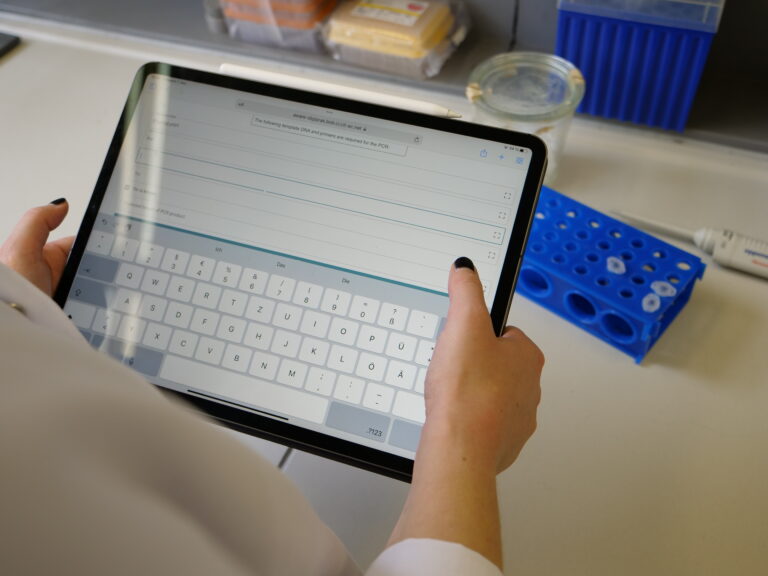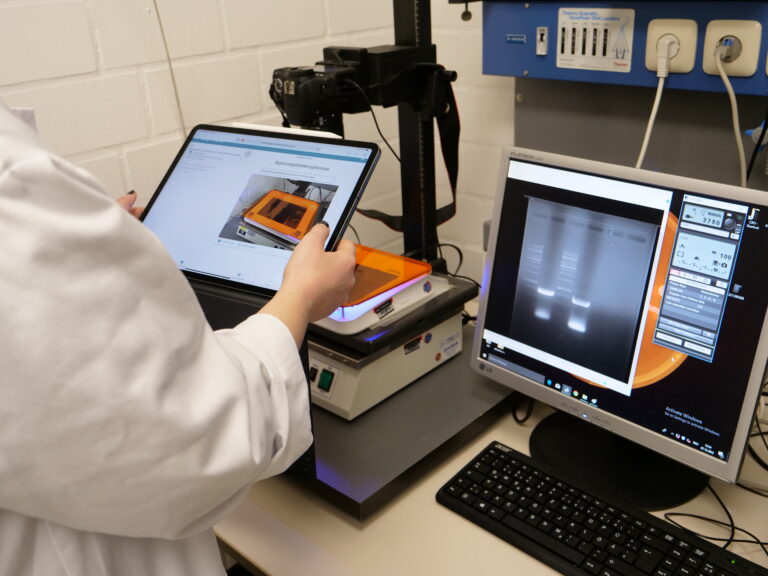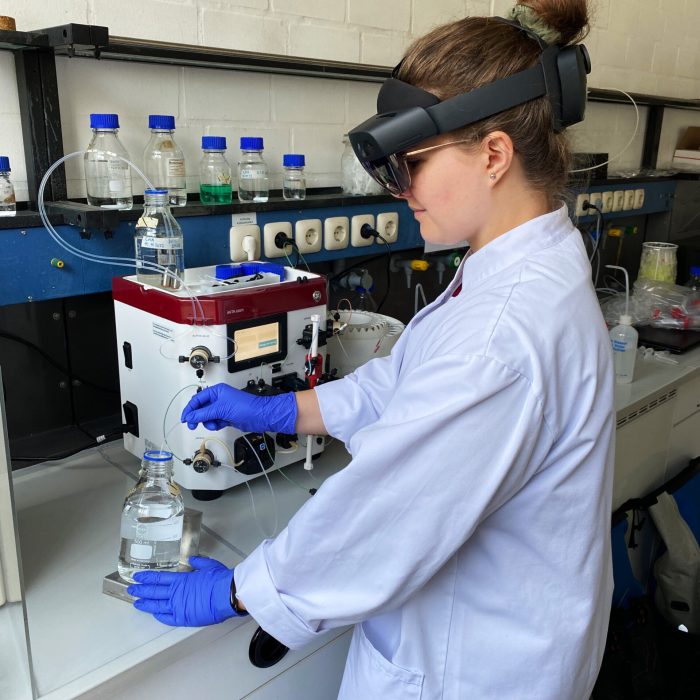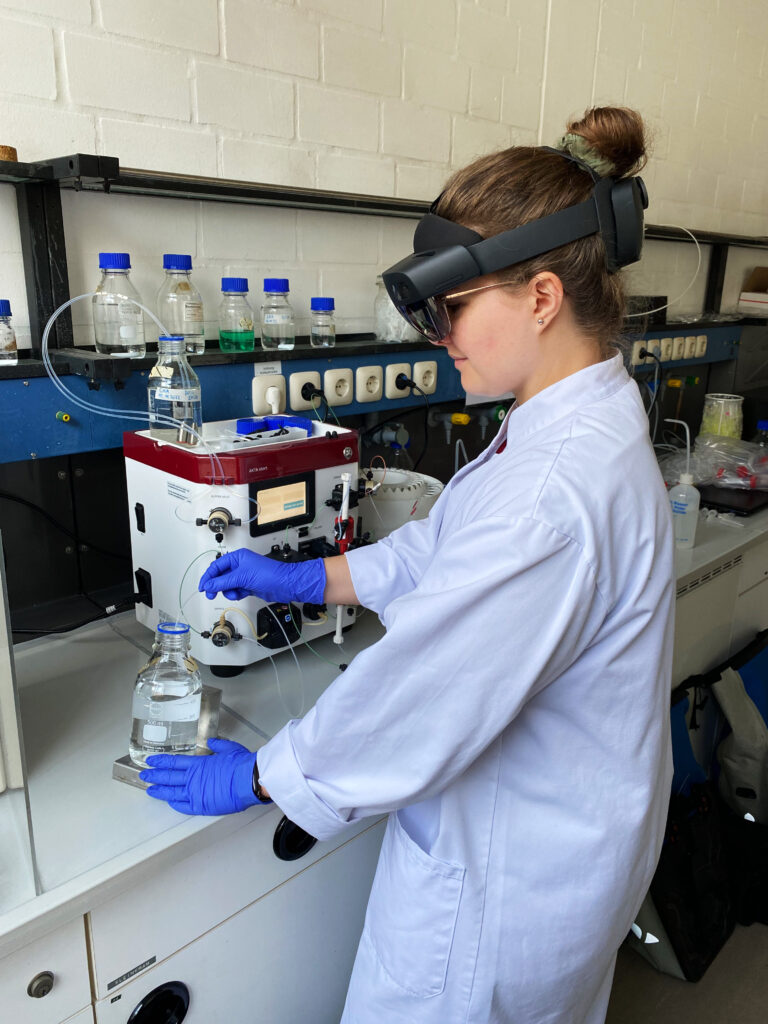Core functions
Model based description of experiments
betterprotocols offers a lot of freedom in the design of the protocols. It’s possible to generate detailed protocols equipped with explanatory media for beginners or more general protocols, which function like a memory support for advanced users.
Web-App for assisted lab work
With help of the betterprotocols web-app you can work with your protocols in the lab using every device you like.
Automatic, digital documentation
The automatic generated report documents all steps performed together with your notes and entries. It functioned as a digital lab journal.
Analysis for users
On the betterprotocols dashboard you can see interesting analytics of your performance in the lab. Data such as the duration of the experiment may help you to learn how to organize working time effectively.
Model based description of experiments
Web-App for assisted lab work
Automatic, digital documentation
Analysis for users


Digital manual for your experiments
High flexibility in protocol design
The protocols are created with business process model and notation (bpmn). You are very flexible in the design of your manuals. For teaching purposes or for beginners you can generate detailed protocols, equiped with pictures or videos to explain single steps or special handholds. It’s also possible to request specific items before proceeding with the protocol.
More experienced users may prefere more general protocols with focus of the documentation features of the software. While performing an experiment, the program automatically generates a report, where you can find time stamps, notes and the information that was entered in the fillable filds. This report may be used as your lab journal entry.


Open Educational Ressources
We provide here three exemplary protocols as Open Educational Resources (OER) in BPMN format for biotechnology laboratory experiments and to get the idea of our workflows. These protocols, which include multimedia instructions are conveniently available for download on our Sciebo file sharing service as follows:
The first package on transfection of HEK cells contains a preview of the assisted processes with screenshots of the multimedia information as rendered in the assistance system. All of the processes in the archive files underlying these protocols can be reviewed using the Camunda Modeler, an open-source and free-to-use tool, which is available for most operating systems at the Camunda website. For access to additional protocols and a trial of our interactive platform, we invite you to contact us.


Platforms
Our system is available for different platforms. To get a glimpse into possible future applications, we run one of our processes on Microsoft HoloLens 2.
In this example you can see an instruction for a hplc system. You can position the virtual manual at every point in the room and flip through it by gestures without need to touch your device. It’s possible to mark specific points at the instrument for explanations, which is very helpful for first time users. In our example we marked the sample tube of our hplc system.
It’s conceivable to connect laboratory instruments with the HoloLens front end of betterprotocols to enable the control of these devices via gestures, which might be very helpful in sterile environments.
